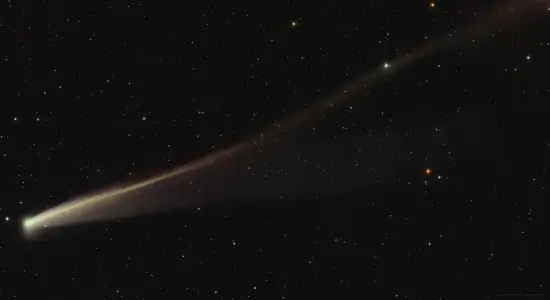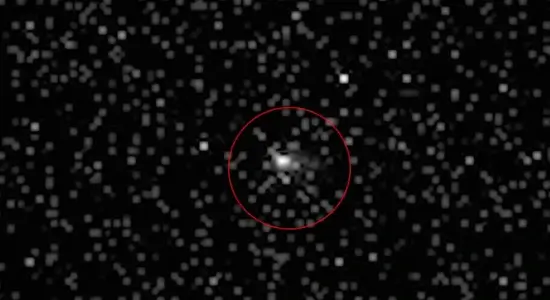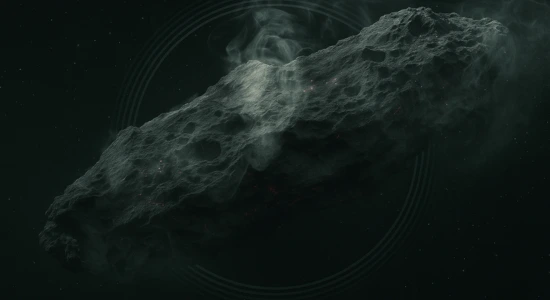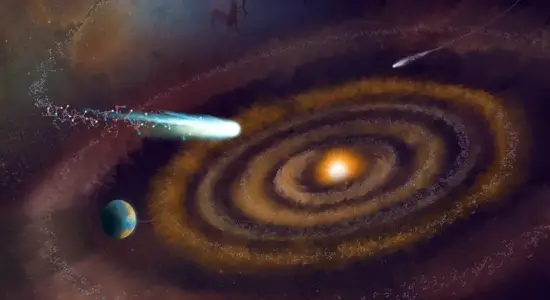Curiosity Uncovers Record-Breaking Organic Molecules on Mars—Could They Be Linked to Life?
???? For over a decade, NASA’s Curiosity rover has been roaming the ancient terrain of Gale Crater, unraveling Mars’ deep secrets. And now, it has made an astonishing discovery—the largest organic molecules ever detected on the Red Planet! Found within the 3.7-billion-year-old Cumberland mudstone, these molecules (or their chemical predecessors) date back to a time when Mars was a very different world. But before we jump to conclusions, let’s break it down: do these molecules mean Mars once hosted life? ????
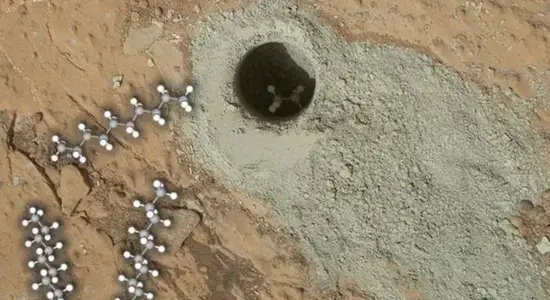 The Cumberland drill hole at Yellowknife Bay, Mars, alongside models of the longest organic molecules ever found on the planet.
The Cumberland drill hole at Yellowknife Bay, Mars, alongside models of the longest organic molecules ever found on the planet.
Image Credit: NASA/JPL-Caltech/MSSS, Caroline Freissinet
Organic Molecules: Life’s Building Blocks—But Not Always
The word “organic” can mean different things depending on who you ask. To a chemist, it simply refers to carbon-containing molecules, which can be formed through both biological and non-biological processes. So, while these newly discovered molecules don’t prove that Mars was once teeming with life, they do tell us that if life did exist, its chemical fingerprints might still be hiding beneath the surface. ????
A Peek Inside Curiosity’s Chemistry Lab
Over the years, Curiosity has been analyzing the Martian soil using its onboard Sample Analysis at Mars (SAM) instrument. Previous discoveries included organic molecules containing up to six carbon atoms, some bonded with chlorine or sulfur. But this time, scientists decided to tweak their approach. Concerned that certain Martian chemicals might be interfering with their results, they employed a two-stage heating process:
- Heat the sample to 475°C (887°F), then cool it down.
- Reheat it to a scorching 850°C (1,572°F) in the presence of a derivation agent called MTBSTFA (a mouthful, we know!).
This extra step worked wonders! It led to the detection of long-chain organic molecules known as alkanes, specifically decane (C10H22), undecane (C11H24), and dodecane (C12H26). This was a breakthrough—never before had such large organic molecules been spotted on Mars. ????➡️????
Could These Molecules Be Linked to Life?
The discovery of these alkanes raised an exciting possibility. On Earth, similar molecules can be formed from long-chain fatty acids, which are essential components of cell membranes. These fatty acids can be created through non-biological means, but longer chains (such as oleic acids with 16 or 18 carbon atoms) are considered stronger indicators of biological origins.
Here’s the catch: if such long-chain fatty acids were originally present in the Martian rock, they might have been altered by the heating process, leaving no trace for SAM to detect. This means that while we haven’t found definitive proof of past life, we now have a better reason to believe that any biological markers from ancient Martian life—if they existed—could still be preserved within the planet’s rocks. ????
What’s Next?
The only way to know for sure is to send a rover equipped with even better detection tools. Interestingly, a robotic mission might stand a better chance than a human crew, since astronauts could accidentally contaminate Martian samples with Earthly molecules. Alternatively, if the Mars Sample Return Mission gets the green light, we could analyze some of these fascinating rocks in a high-tech lab back on Earth. ????✨
One thing’s for sure—Mars isn’t done surprising us yet! ????????
???? The full study is published in Proceedings of the National Academy of Sciences.
If you love stories about NASA and space exploration, there’s plenty more to discover! ???? From groundbreaking missions to the latest cosmic discoveries, we’ve got fresh content for you every day. Don’t forget to check out more on our website and stay updated with the latest space news! ????
ref : iflscience

